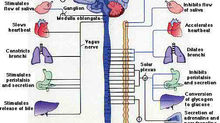NLP Swish Technique
- Tom Lynam
- Mar 24, 2015
- 2 min read
The NLP 'swish' technique is used to replace negative visualisations and expectations in specific situations such as public speaking with positive expectation and visualisation. It is most effective with people who have a visual sensory preference.
We begin by identifying the trigger which is leading to these negative thoughts and feelings. Usually there is a stimulus which triggers a behavioural response and by finding this we can then go on to address it with accuracy. It could be the idea of people looking at you while your speaking, testing your knowledge by asking you questions in an interview etc. Sometimes people can find it hard to pin this down, it can help to look at it from the opposite end of usual inquiry; if you had to try and convince someone to feel negative or fearful of a situation, how would you do it? We now should have the negative cue well described. It is wise to now mentally move away from this image, doing and thinking something completely different, to reset the brain for the next step.
The client now imagines themselves in the polar opposite scenario. If they previously imagined a failing public speaking perfromance, they now imagine walking confidently around the stage, people listening avidly and respectfully etc. This is the image that is going to replace that old, negative visualisation. The client is encouraged to focus upon the imagined stimuli and to 'turn them up', becoming louder, more vivid, brighter, more tangible; a visualisation of a dial may be used in increasing their strength. Now the client again mentally moves away from the process and is occupied with something completely different, talking of the weather, economics, whatever.
Now we return to the original, negative picture. It's important that this is experienced in the first person, not as a memory or dissociation. The client acknowledges the negative stimuli. The positive, polar image is placed in the corner of the clients' vision, shrunk down to a postage stamp. The client is now ready to swap the images, replacing the negative with the positive. The postage stamp rapidly expands, completely eclipsing the old image, the new image fills the mind of the client and they re-experience in the first person the powerful positive stimuli, enjoying the experience of confidence or success.
This process is repeated several times, at least eight. Each time the client should spend some time experiencing and enjoying the positive replacement and take mental breaks between each exchange. Through repetition the old, outdated expectations and feelings are replaced with the new, allowing the client to function as they have desired when the situation is experienced in the future.









Comments